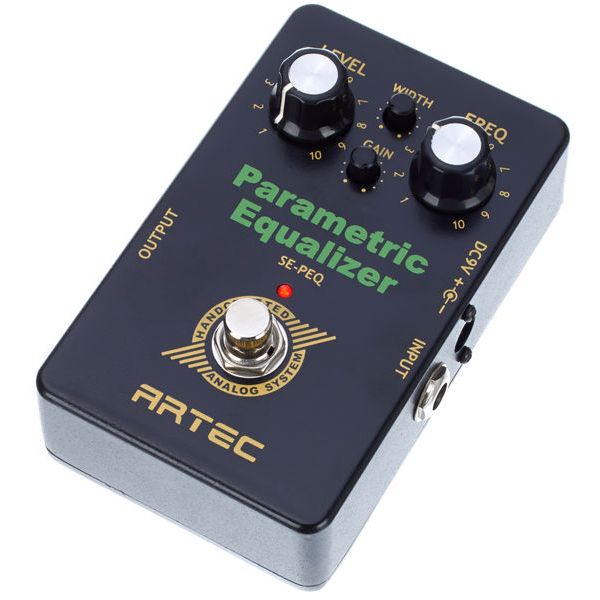

So what frequencies do we need to cut in our drums? Good question.

Now, EQ is not going to completely solve this problem of boxiness, but it can sure help reduce it and this is a good example of when you want to cut frequencies instead of boosting them. This is a very common problem with the home recording guys (recording poorly tuned drums in bad acoustic spaces). (They don’t crack, they sound like you hit a cardboard box. Of course, this is useless talk in an article as I’m not there looking over your shoulder.
Parametric eq how to#
Well, this is kind of like telling someone how to hit a baseball in an article. When a shelf doesn’t do what you want to do, it’s time to use the standard boost and cut that parametric provides as described above. Many times a shelf is not going to fix specific problems in a track. This is very useful for instruments that you don’t want in your subwoofers. If you set this to 100Hz everything under 100Hz is gone. Like a crossover, this filter knocks out everything underneath the frequency you’ve selected. What Can A Parametric EQ Do?Ī few common examples of using a parametric EQ: High pass filter This helps prevent over-processing and makes sure your changes are subtle. Parametric Equalizers usually have an On/Off switch for each band, allowing you to apply only the boost or cut that is needed in that range of frequencies. With a Parametric EQ, the red line can be precisely positioned where you need it.

For instance, if you find that your track is muddy in the “80 to 100 Hz” range, it can be hard to know exactly where that mud begins and ends with only a Peak/Notch EQ. Parametric EQs are especially useful when there is more than one problem in the frequency spectrum. Each band can be adjusted separately, allowing you to zero in on the frequencies you’re looking for. Parametric Equalizers usually come with 4 to 12 bands (some only have 2). A graphic equalizer gives you one control per band, while a parametric lets you select both frequency and amplitude. Parametric EQs are also usually better than Graphic EQs because they give you more control over the shape of the curve. A peak/notch equalizer doesn’t give you as much control over the range of frequencies that get affected by the cut or boost. Parametric EQs are usually better than “Peak/Notch” EQs because they let you precisely select the frequency, and what exactly gets boosted or cut. This makes them perfect for correcting problems with the frequency response of a track, or for adding some “color” to the sound. They offer great flexibility because you can adjust the center frequency, gain or amplitude, and bandwidth or Q. Parametric EQs are commonly used in mastering, mixing, and recording (and for live sound).


 0 kommentar(er)
0 kommentar(er)
